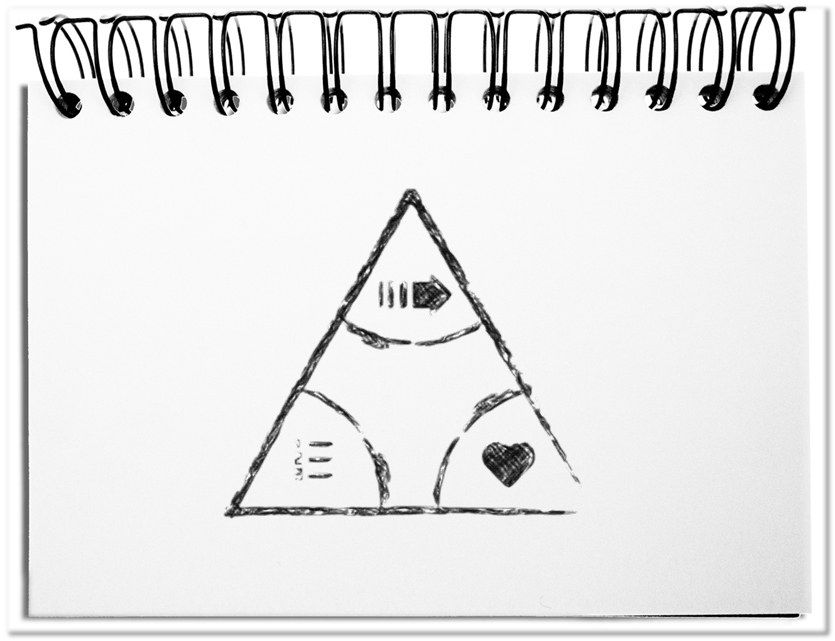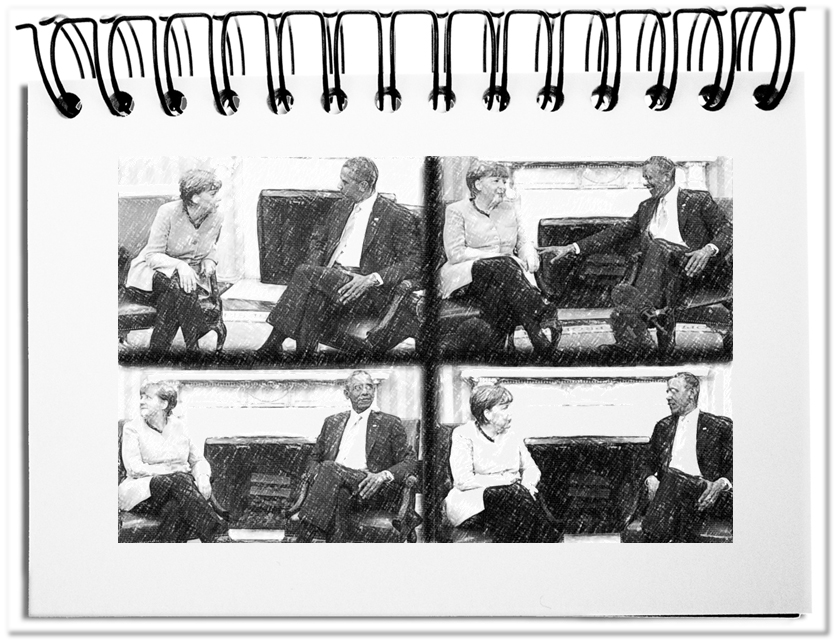Consistent networks and various channels not only offer a platform for publishing to classical media providers, but also for all those, who feel inspired. The only requirement is access to the Internet. For this reason, we have a huge flood of information – no matter from where, by whom, when, and whether right or wrong. This creates new potential use, operating models and interests to inform target groups. And everyone is looking for their position in the publication triangle.
The ideal place is in the middle of the triangle – simultaneously objective, emotional and efficacious. In Germany, the balanced positions claim the public media. Let’s take a closer look at the triangle.
- The objective corner
Let’s assume that there are such things as unambiguous messages that describe something as it is – without omitting content, generalizations and distortions. The components would not be burdened by conscious or unconscious intentions. Everyone would understand the same thing.
Events and physical things can be described best objectively – it’s now 5:32 pm; today is Friday; it’s raining; I type on a black keyboard; I use MS-Word. Let’s take the following example: In front of the café where I am sitting, groups of young people have gathered, chanting their slogans and moving towards the town hall, where police units are already taking their stand … With this description, one has already moved out of the objective corner. Especially, if you consider that I have withheld the fact that next to the town hall is the football stadium, where a game will later take place.
The choice of words does not only provide objective content, but also additional information e.g. about the context, intentions and assessments. And in the end the target group decides on the content of the message. For declared opponents of football, it will make no difference, whether they are football fans or demonstrating extremists.
I am afraid that we have to live with the fact that the objective corner is unattainable – no matter how much objectivity reporters claim for themselves, the incompleteness of the content and the association potential of the recipients create different meanings in the mind of the individuals. - The emotional corner
Most people expect from fictional stories nothing more than coherence. As long as the various elements fit together, they are absorbed and processed without anything actually being true. In this corner, negative emotions (e.g. feeling helplessly at the mercy of others or feeling excluded and humiliated) and positive emotions (e.g. the sensation of being able to decide and determine for oneself or being acknowledged) are addressed.
The effects become noticeable when descriptions meet emotionally charged experiences in the recipient – the final exam; the tsunami; the passion; the Madeleine. The mental connection with the experience awakens the feelings of that time – joy, surprise, fear, anger, sadness, and shame … Depending on its nature, one is completely drawn into this corner. This becomes particularly obvious in the cinema, when the people sitting next to you laugh out loud or burst into tears.
The emotional corner can be reinforced by cleverly chosen situations and the choice of words – the secluded white sand beach besides a turquoise sea with an orange sun that slowly disappears into the horizon; metal waves as high as houses crashing through New York street canyons; the fine sandpaper caressing the body of a violin; the smell and taste of a madeleine that beams Marcel Proust into his childhood.
You can’t escape this corner, because the feelings are unintentionally triggered in the subconscious when you have stored a corresponding experience. Some feelings are internalized through years of media consumption and gets exploited by content providers to get our attention. In such a Trojan horse hide other intentions that automatically trigger additional needs – the desire to consume certain products and services; the need for security; the unconscious urge to be part of a majority position, etc. - The efficacious corner
The senders pursue more or less consciously a purpose with their publications – a communication should be believed; a promise should be kept; praise should please; a designation should be accepted; an invitation should also lead to realization.
The operating model determines the effect, which can be economic (the business model), political (the political agenda) or religious (the confession). A newspaper is successful, if it is bought and read a lot. A party has achieved the desired effect, if it gets elected by the majority. A church is well attended, when the number of believers grows.
The audience expectations determine in this corner the success. It is determined by the required mix of objectivity and emotionality. This corner has a great influence on the position in the triangle. For example, a factual reporting of a news channel can become a propaganda machine, if the fears of the audience are stirred up populistically – remember the media use of Trump and Berlusconi. The choice of topics is driven by the economic interests of a newspaper or a broadcaster – target group-oriented content increases the circulation. The blogger who, in the hunt for Likes, supplies his channel with ever new content, pays not only attention to his audience, but also to the interests of its sponsors.
In this corner the actual intention of a provider is hidden. Cicero’s saying, „Cui bono?“ (i.e. who benefits from it?) reveals the real intentions. The first look into the publication triangle should start in this corner, because here you can find the reason of the other two corners direction.
Bottom line: Today we should no longer speak of an information flood, but of a consistently higher level of information to which we are exposed. And all this content can be located in the publication triangle. We recognize consciously or subconsciously objective content, the emotional hue and the intended effect. Because of the accessibility of almost all people, we must be aware that we have not developed a natural mechanism to protect us from the manipulative effect of the media. For this reason, we should focus more on the publication triangle in the fact check – What does the message mean to me? Why does it appeal to me? Who benefits from it? It remains to be seen, whether we will find in the foreseeable future a way out of the tension to be informed vs. influenced.


